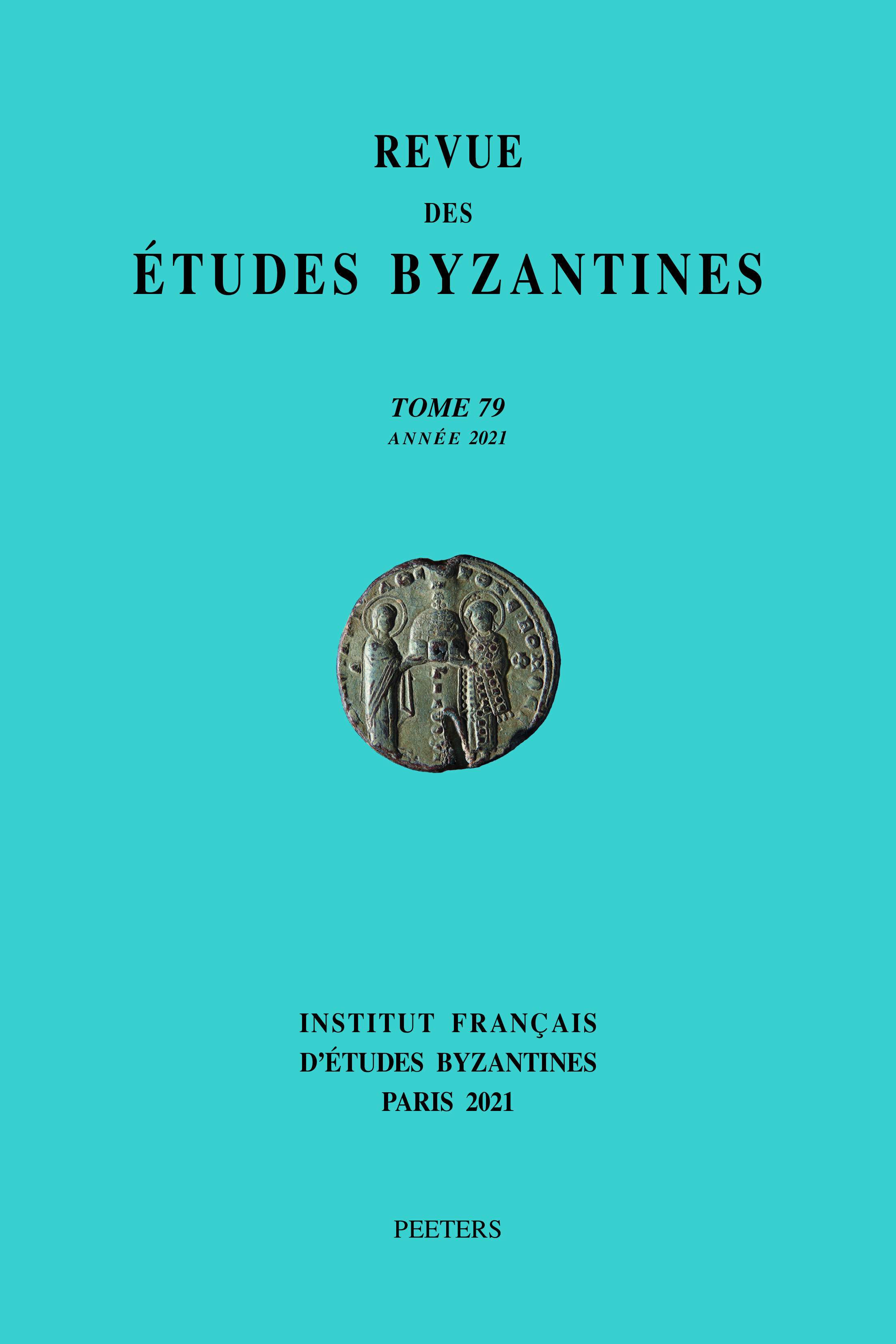 previous article in this issue previous article in this issue | next article in this issue  |

Preview first page |
Document Details : Title: De Constantinople à l'île d'Andros Subtitle: Regards sur l'histoire de la bibliothèque du Métochion du Saint-Sépulcre Author(s): LAMPADARIDI, Anna Journal: Revue des Études Byzantines Volume: 78 Date: 2020 Pages: 219-245 DOI: 10.2143/REB.78.0.3288412 Abstract : Cet article vise à compléter notre connaissance de la bibliothèque du Métochion du Saint-Sépulcre à Constantinople, fondée au 17e siècle, à travers l’examen d’un inventaire de ses manuscrits dressé en 1881 par Hésychios Papadopoulos. Cet inventaire ne nous était connu jusqu’à ce jour qu’à travers le manuscrit Jérusalem, Bibliothèque du Patriarcat, Néa Syllogè 36, dont la fin est tronquée. L’examen d’un nouveau témoin, le manuscrit Andros, Monè Hagiou Nikolaou, 62, qui transmet un état plus complet de l’inventaire rédigé par Hésychios Papadopoulos, offre de nouvelles pistes et un témoignage rare sur le fonds du Métochion. En replaçant l’inventaire d’Hésychios Papadopoulos dans l’histoire de cette bibliothèque, l’article s’attarde sur l’apport du manuscrit de l’île d’Andros à la connaissance du fonds du Métochion. Ce travail se clôt sur l’édition et la traduction en français d’une lettre liminaire, jusque-là inédite, transmise par le manuscrit de l’île d’Andros. The article is devoted to the Library of the Metochion of the Holy Sepulchre in Constantinople, founded in the 17th century. It focuses on an inventory carried out in 1881 by Hesychios Papadopoulos. Up until now, the truncated manuscript Jerusalem, Library of the Patriarchate, Nea Sylloge 36, was the only known record of this inventory. The newly identified manuscript Andros, Hagios Nikolaos Monastery, 62, contains a more complete version of the inventory conducted by Hesychios Papadopoulos and sheds new light on the manuscript collection of the Library. To begin with, the article describes the role that the inventory played in the history of the Library. Then follows an analysis of new evidence provided by the Andros manuscript. The article concludes with the publication and translation into French of a previously unpublished introductory letter found in the Andros manuscript. |
|


